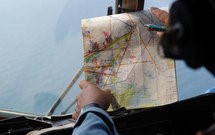 On March 8, 2014, Malaysia Airlines flight MH370 lost contact with air traffic control at about 2:40 a.m., after departing from Kuala Lumpur, Malaysia, at 12:41a.m. The Boeing 777-200 aircraft was expected to land in Beijing, China, at 6:30 a.m. the same day. The flight was carrying a total number of 227 passengers, including two infants and 12 crew members.
On March 8, 2014, Malaysia Airlines flight MH370 lost contact with air traffic control at about 2:40 a.m., after departing from Kuala Lumpur, Malaysia, at 12:41a.m. The Boeing 777-200 aircraft was expected to land in Beijing, China, at 6:30 a.m. the same day. The flight was carrying a total number of 227 passengers, including two infants and 12 crew members.
Having investigated quite a few aircraft disasters as a special agent with the State Department, I thought it would be helpful to understand what the investigators will be focusing on as the case unfolds.
On a practical level, in aircraft disaster investigations, agents begin the investigation even before the crash debris has been located. They start by ruling out causes of the crash, focusing on four main variables: 1) catastrophic mechanical or electrical failure; 2) pilot error; 3) weather; and 4) man-made causes. This category would include criminal sabotage, terrorism or military activities, such as missiles fired at the aircraft.
The investigators in this case have likely already ruled out pilot error and weather, based on what we've seen reported in the open source. The weather in the area was reported to be relatively good. The fact that the aircraft was already at cruising altitude when radio contact was lost would give the pilots time to correct most errors.
At cruising altitude, the pilots would also have plenty of time to radio back and report any problems. Therefore, with the information currently available, catastrophic mechanical failure or man-made causes would be the primary working theories. Although it's important to keep an open mind when looking at these horrible events, the reality is planes just don't fall out of the sky, at 35,000 feet, without a serious reason.
It's also very reasonable to assume that the U.S. and other governments may have captured a signature -- or a picture -- of the explosion from satellite coverage of the South China Sea. These images could provide a very good idea of what the aircraft looked like close to the time of the event, similar to the breakup photos of the Space Shuttle Challenger mishap. Behind the scenes, the CIA, FBI and numerous foreign intelligence services will also be beating the bushes, looking for any evidence or chatter of an attack that could have been missed.
From an investigative perspective, the absence of a manual pilot alert may be due to a catastrophic decompression in the pilot cabin that rendered the pilots incapacitated. This could be caused by a massive structural failure of the aircraft or possibly an improvised explosive device. The alleged change of course direction before the aircraft disappeared, as reported in some media, could be indicative of the cockpit nose shearing off and changing direction as the plane fell apart.
Courtesy : Stratfor (www.stratfor.com)